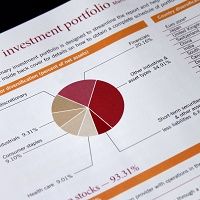Periodically Review Your Retirement Investments
When it comes to your retirement investments, there's no time like the present to do a check-up.

To use an old cliché, saving for retirement is a marathon, not a sprint. If you started saving early and continue with your contributions, increasing them as your income increases, avoid taking money out, and invest in ways that are consistent with your overall goals, you should be all set for a comfortable retirement.
But the farther you are from retirement, the less likely you may be to take an annual look at your retirement plan performance. This isn’t necessarily good, because investments aren’t static—and neither are you or your veterinary practice income. Your financial situation may be different now than when you started investing. Additional changes could involve dependents, inheritances, unexpected expenses, and many of the other little curveballs life can throw your way. Consider putting a date on the calendar each year when you take a look under the hood and see how the engine is operating, even if it's not making any strange noises.
Why now?
Why not? Most people think of reviews around the turn of the calendar, but that time can be hectic with holidays and other things that need to be done annually, like making a list of resolutions you’ll soon ignore. Spring is tax season, and major retailers will have Christmas sales on display soon. Now is as good a time as any. The good news is that this review doesn’t have to take long; set aside an hour to look through your plan documents, your investment returns, any investment tracking tools your retirement provider makes available, your monthly and annual budget, and your life insurance policy and will.
Then consider the following:
Have your contributions kept up with your income? For many veterinarians, income increases through the early and mid-career, and probably peaks within a decade or so of nearing retirement. Whether your career follows that same curve or not, chances are you’ve seen some income changes since you set your retirement investing strategy. Is that strategy still best for you? If not, you might want to consider shifting some investments. Lifecycle funds handle this shift automatically, but if you elected not to go that route, you may have to make the allocation adjustments yourself.
Check your investment performance in comparison to other retirement providers and funds. Though it isn’t always easy to follow, you should be able to review your investment performance regularly to ensure that you’re not stuck in a series of investments that just aren’t performing as well as others might be. Even if you have the choice of only one retirement provider, you have fund choices within that provider, and you may wish to make a change if you’re seeing consistently low performance.
The key here is not get carried away by lower-than-expected returns over a year or two, but rather to look at the long-term picture of returns. As always, make sure the fund’s investing strategy matches your goals. If you’re just starting to save and looking for explosive performance potential, domestic blue-chip stocks and government bonds may not be the right mix for you.
Update your beneficiary information. If you recently went through a divorce, the death of a loved one, or the birth of a child or grandchild, chances are that updating your financial accounts wasn’t top of mind right then. That’s why a periodic review is important. Make sure that if something happens to you, those closest to you are taken care of in accordance to your current wishes—not what you may have set up when you first started saving. This goes for not just retirement savings, but also establishing a will and living will, and regularly reviewing life insurance beneficiaries.